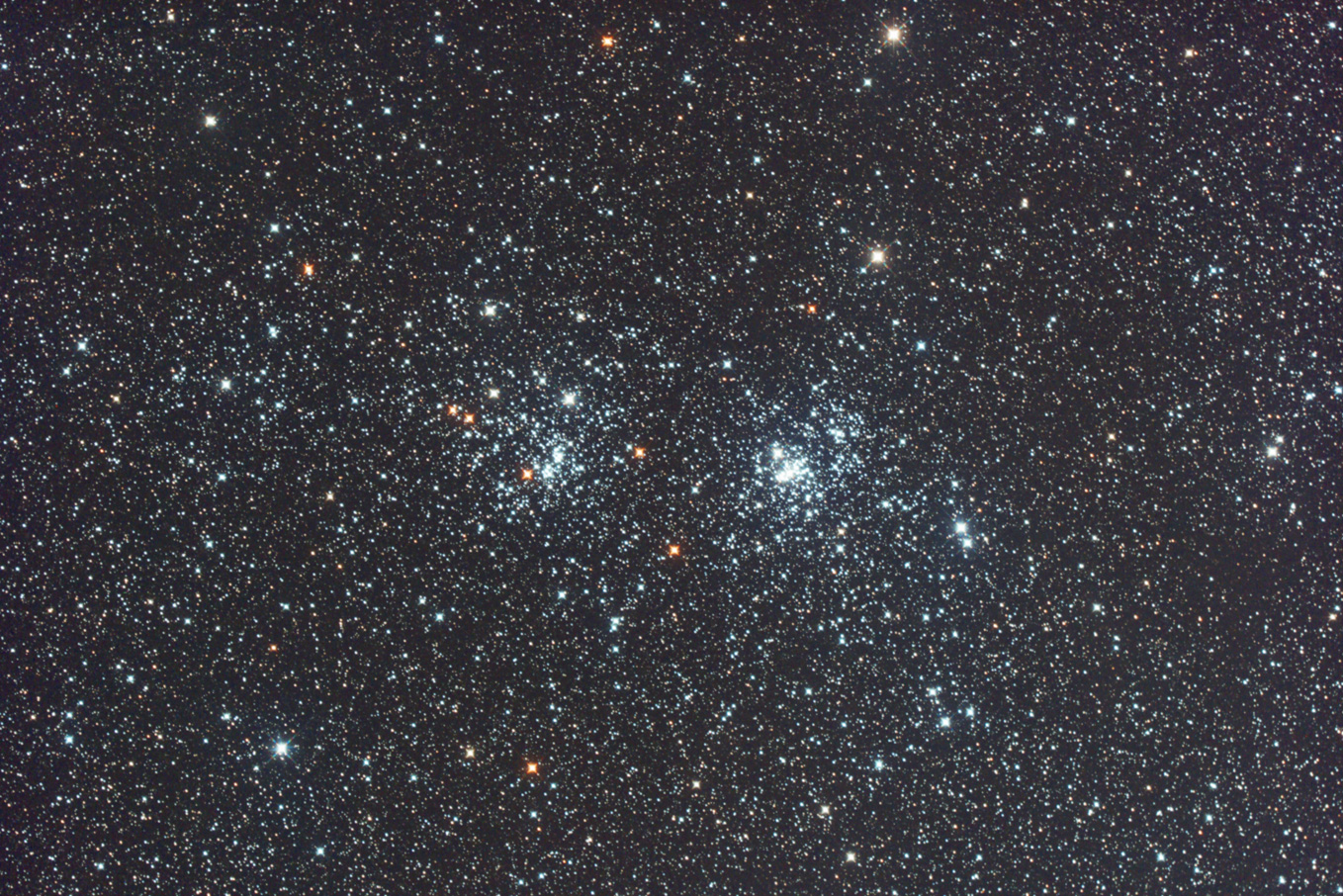| Date & Time: | Nov 29 2013, from 26:31 to 26:52 JST(+0900) |
| Composed 6 shots with 4 minutes exposed |
| Optical: | TAKAHASHI 16cm(6.3") epsilon (f=530mm, F3.3) |
| with IDAS LPS-P2-FF Light-pollution suppression filter |
| Auto-guided with TAKAHASHI EM-200 Equatorial |
| Digital Camera: | Canon EOS 550D (Remodeled) |
| Location: | Ooizumi, Hokuto city, Yamanashi pref. |
| NGC869 (h Per) / Open Cluster, type f, I 3 r |
|---|
| R.A. | 02h 19m 0.0s (2000.0) |
|---|
| Dec. | +57° 09' 00" (2000.0) |
|---|
| Apparent Size | 36' |
|---|
| Real Size | 77 light yrs. |
|---|
| # of Stars | 200 |
|---|
| Magnitude | 4.4 |
|---|
| Distance | 7330 light yrs. |
|---|
|
| NGC884 (kai Per) / Open Cluster, type e, I 3 r |
|---|
| R.A. | 02h 22m 23.9s (2000.0) |
|---|
| Dec. | +57° 07' 00" (2000.0) |
|---|
| Apparent Size | 36' |
|---|
| Real Size | 77 light yrs. |
|---|
| # of Stars | 150 |
|---|
| Magnitude | 4.7 |
|---|
| Distance | 7330 light yrs. |
|---|
|
At just center of the Milky Way between Perseus and Cassiopeia, you'll be fascinated with a splendid pair of open clusters well known as "The Double Cluster".
They're drawing close side by side, easily seen by naked eye or binoculars.
West (right-hand side) and east (left-hand side) ones are NGC884 and NGC869 respectively, and there is one more pair-name of "h" and "kai",
this is traces that Bayer, a German amateur astronomer, had named these clusters as stars in 1603.
Distances of these clusters are 7330 light years, and are both considered babies about 4 or 5 million years old.
The Double Cluster is the kernel of "The Perseus 1st Association", one of the inner-Galaxy fields include rich inter-stellar matter,
and a Galaxy's arm includes the association is called "The Perseus arm".
|

